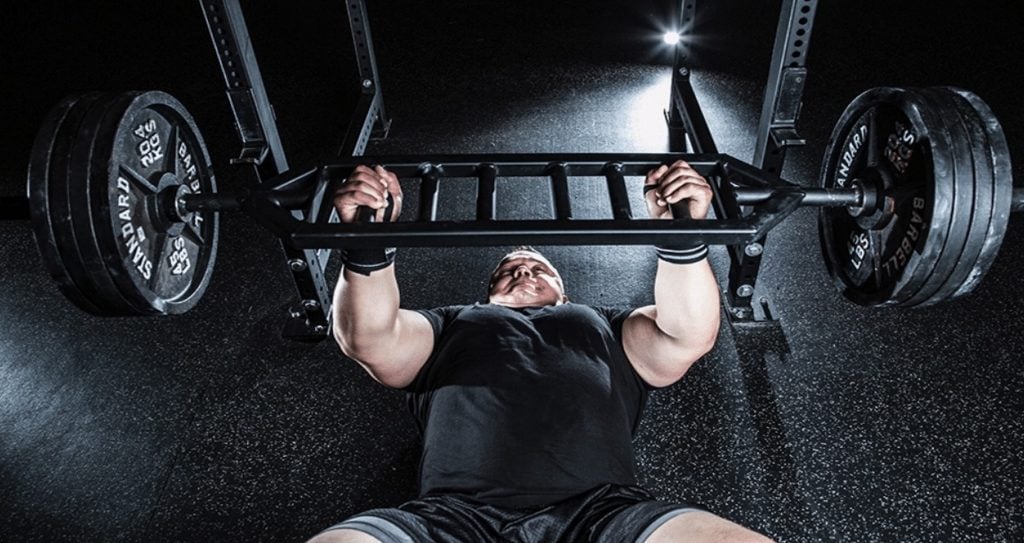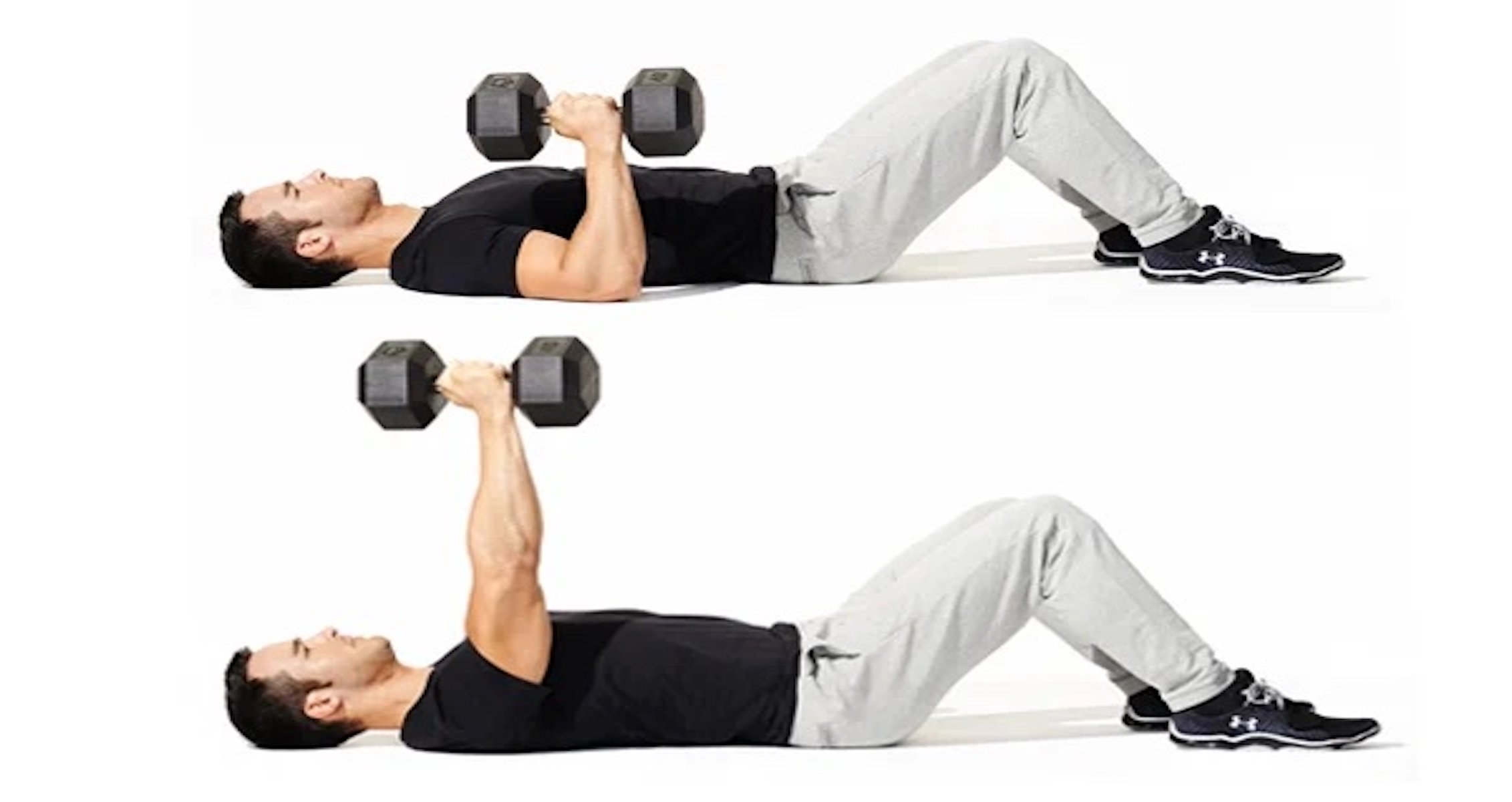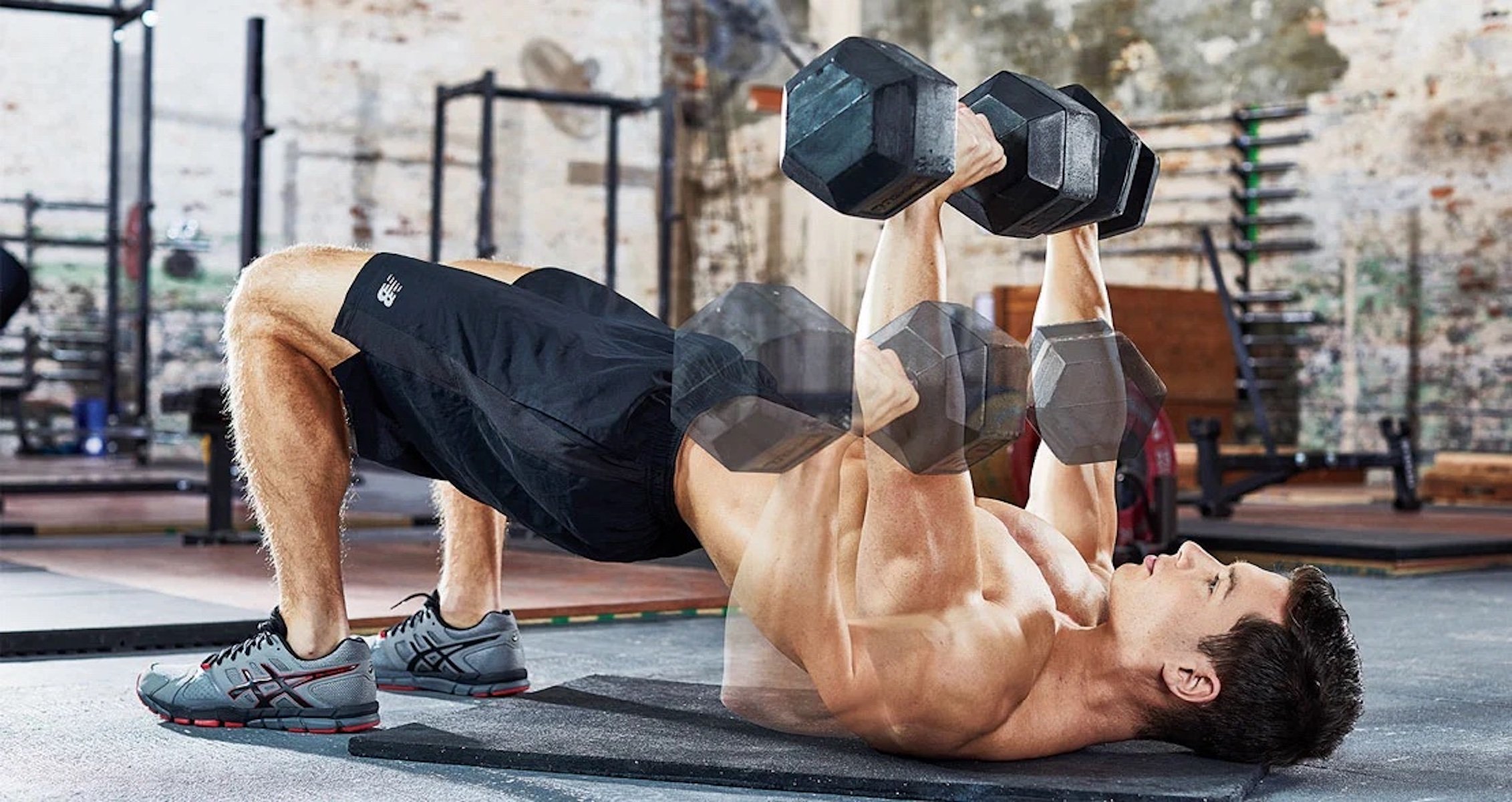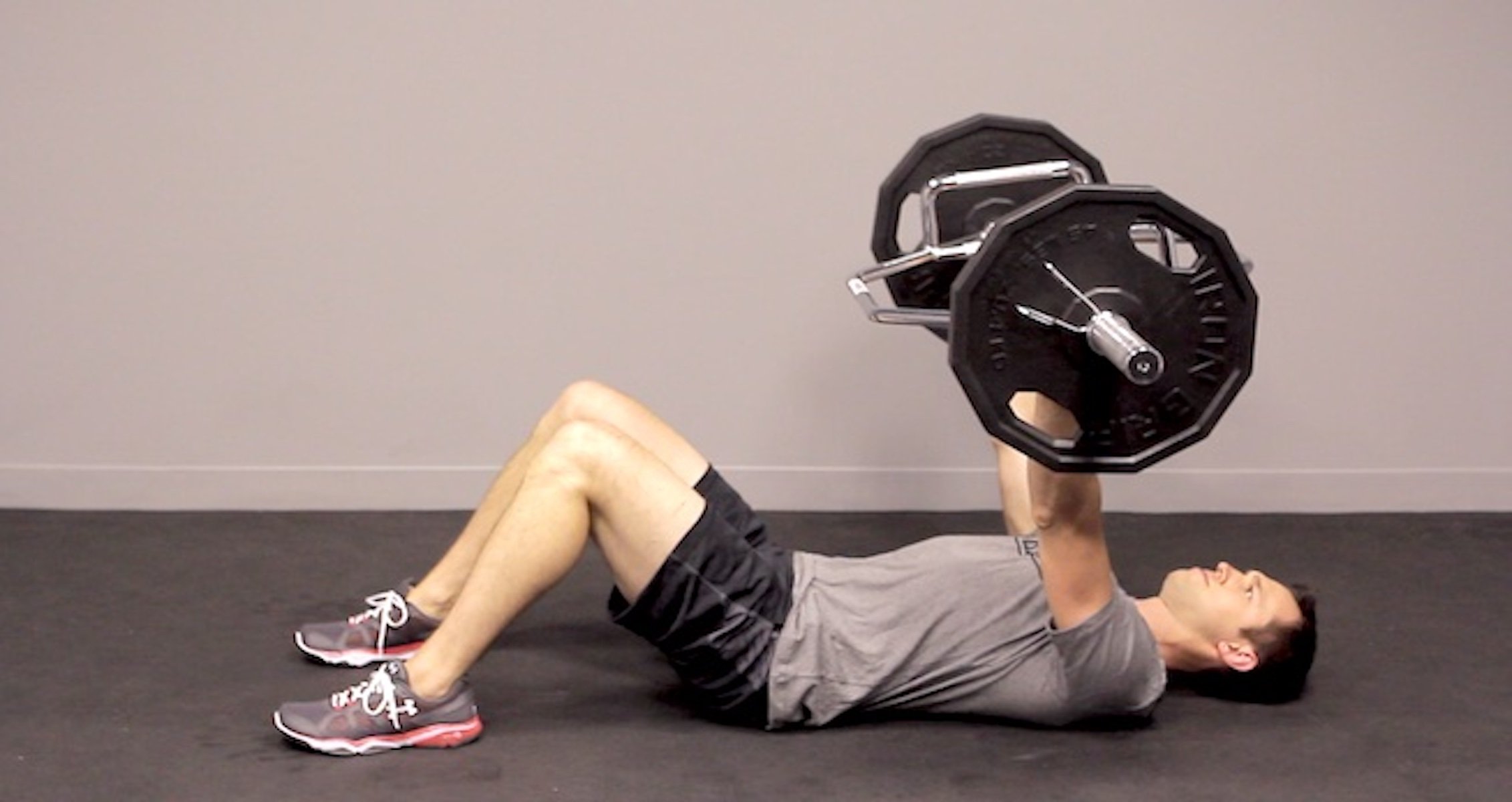Here are six floor presses to try during your workout program.
The floor press has gained notable popularity over the years. What started as a powerlifting staple has now become increasingly recognized among regular gym-goers. And for good reason, since the floor press comes with a myriad of benefits.
The reduced range of motion lessens the burden on the shoulders substantially, when compared to the bench press. Not only that, laying on the floor minimizes excessive arching in the lumbar area. So, if you ever experience low back pain when benching, floor presses may be the prescription you’re looking for.
But the benefits of floor presses don’t start and end with pain prevention. They’ll increase your lockout strength in the bench press while slapping meat on your triceps. You’ll get bigger, stronger, and feel less banged up from training. Pretty good deal, eh?
Oh, and no need to worry if the gym’s crowded and all the benches are taken. Just find some floor space and get to work.
Floor Press Variations
There’s an endless list of floor presses to meet your individual training goals.
1. Single Arm Floor Press
If you’re like most gym-goers, you go to the gym with the intention of doing core at the end of your workout, but to no avail. So, why not combine it with your lifting? At the end of the day, every lift is a core exercise if you’re doing it right and using appropriate (i.e. heavy enough) weights.
This single arm floor press really hammers your core given the offset nature of the movement. By pressing with one arm at a time, you’ll feel your core fire up almost immediately to help you counterbalance throughout your set.
Not only does this kill two birds (combining press and core into one), it’s way easier to set up as opposed to holding two dumbbells. Which can be pretty limited in nature as you start to lift heavier weights and don’t have anyone there to hand you the dumbbells.
To perform the single arm press optimally, you want to create as much tension as possible while reaching up to the ceiling with your free arm. Keeping your legs straight, as you’ll see with every type of floor press, minimizes lower body assistance. Thus, placing higher demand on your triceps and core to do the majority of the work. The closer your legs are, the more challenging it becomes.
2. Floor Press with Hip Bridge
On the opposite side of the coin, you can add a hip bridge to your floor press to offer even greater leg drive than the bench press. By raising your hips off the floor as you press, you’re incorporating your lower body and, as a result, should be able to press more weight. Not only that, you’ll simultaneously be working on that pancake ass of yours.
Flex your feet with just your heels touching the floor for more glute activation. Keep your feet flat on the floor while you bridge to incorporate the quads. Both are great, so pick whichever one meets your individual goals.
3. Dead Bug Floor Press
Here’s another 2-for-1 special to tackle your core during the floor press. All credit goes to Tony Gentilcore for this gem.
Dead bugs are important, and chances are you’re not doing enough of them. And although I understand you’d rather watch paint dry while waiting in line at the post office, you should still find a way to add them into your training. Your lower back will thank you, your main lifts will skyrocket, and you’ll be able to take your shirt off without looking like a bag of milk.
The first variation you saw trains the anti-rotation and stability functions of the core. In this case, you’re training the anti-extension aspects of the core musculature by combining the dead bug with the floor press.
When extending your opposite leg out during the press, be sure to exhale heavy for a 3-5 sec count. Pretend you’re trying to blow out a candle that’s 10ft away from you. This will ensure you’re creating and maintaining abdominal tension and thus, providing a support system for the lower back.
You won’t be able to lift as heavy as you normally could with regular floor presses, and that’s the point. So don’t get too bent out of shape if you have to leave the ego at the door and go for the lighter dumbbells.
The key cues you want to focus on here during the dead bug floor press are exhaling heavy as you press the weight up, maintaining a flat lower back against the floor, and keeping tension in the core throughout your entire set.
4. Swiss Bar Floor Press
The neutral grip of the Swiss bar externally rotates the shoulders (as opposed to the internal rotation you’d be using with the straight bar). You also have the ability to load more weight than you potentially could with dumbbells here.
5. Trap Bar Floor Press
The benefits of the Swiss bar are echoed in this trap bar variation with one added perk: grip work. The long levers of the trap bar handles turn the floor press into a forearm-intensive press variation. What’s more, the neutral handles make for a natural pressing motion. All in all, this is just a great pressing variation to add to your arsenal.
6. Landmine Floor Press
The majority of floor presses alleviate the potential shoulder stress often associated with the bench press. This landmine variation takes it a step further and mitigates elbow pain given the thick handle of the barbell collar. That said, it’s not a magic pill that guarantees pain-free elbows. Listen to your body and see professional help if warranted.
You’ll have to play around a bit to get your positioning right with this one. But once you do, you’ll wonder why you haven’t done these sooner. The guided swivel of the landmine really lets you dial in to your pecs while offering greater potential for loading in comparison to dumbbells.
For more news and updates, follow Generation Iron on Facebook, Twitter, and Instagram.











